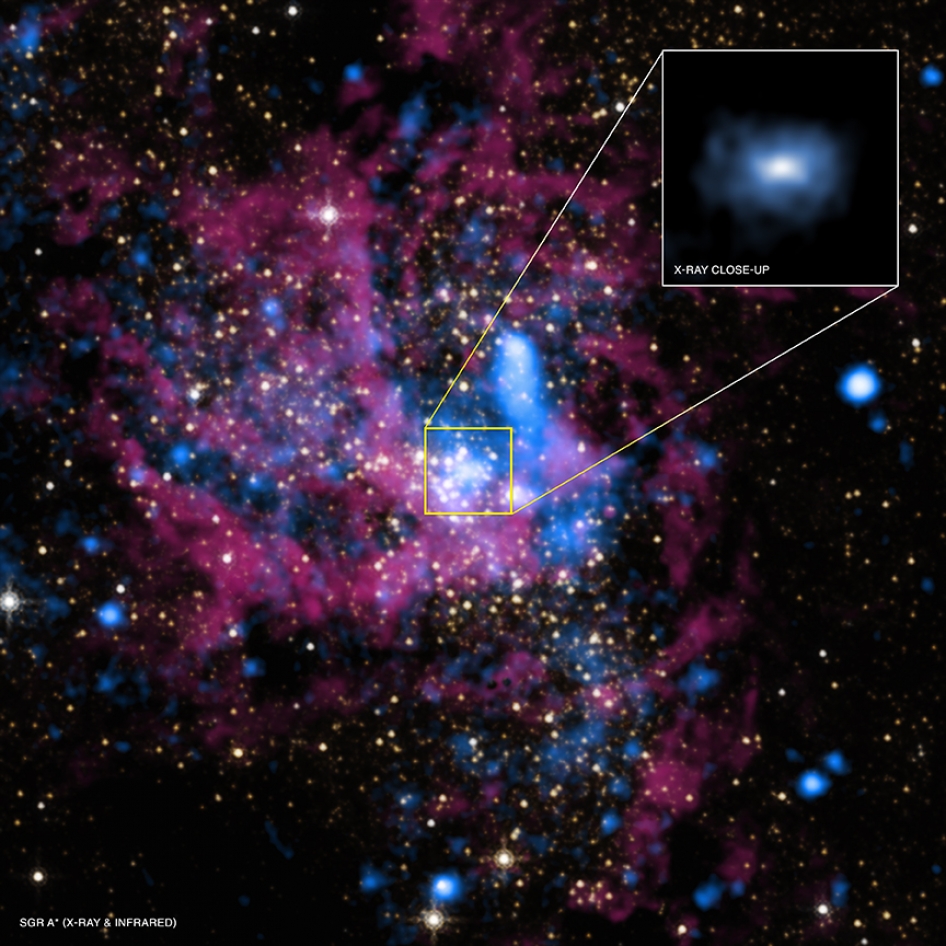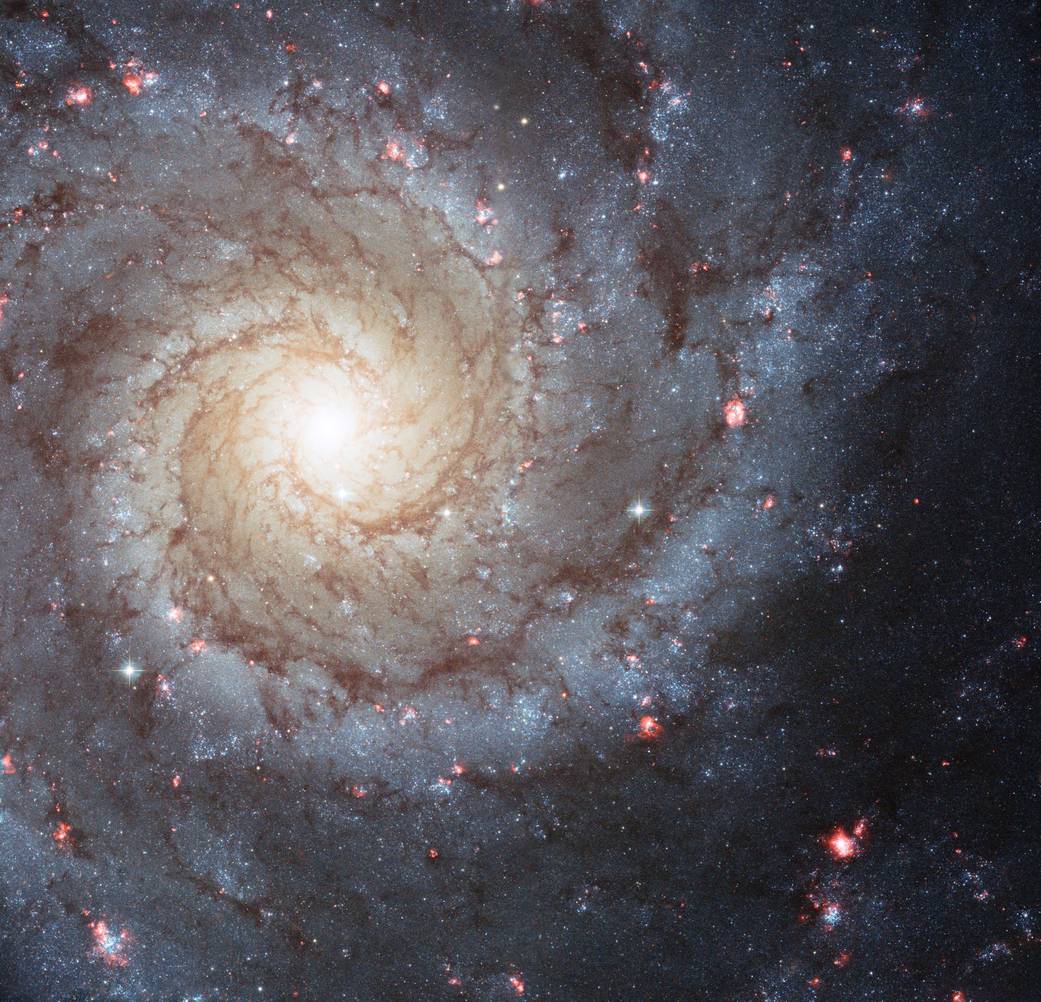Resembling festive lights on a holiday wreath, this NASA/ESA Hubble Space Telescope image of the nearby spiral galaxy M74 is an iconic reminder of the impending season. Bright knots of glowing gas light up the spiral arms, indicating a rich environment of star formation.
Messier 74, also called NGC 628, is a stunning example of a grand-design spiral galaxy that is viewed by Earth observers nearly face-on. Its perfectly symmetrical spiral arms emanate from the central nucleus and are dotted with clusters of young blue stars and glowing pink regions of ionized hydrogen (hydrogen atoms that have lost their electrons). These regions of star formation show an excess of light at ultraviolet wavelengths.
Tracing along the spiral arms are winding dust lanes that also begin very near the galaxy’s nucleus and follow along the length of the spiral arms. M74 is located roughly 32 million light-years away in the direction of the constellation Pisces, the Fish. It is the dominant member of a small group of about half a dozen galaxies, the M74 galaxy group. In its entirety, it is estimated that M74 is home to about 100 billion stars, making it slightly smaller than our Milky Way.Image Credit: NASA, ESA, and the Hubble Heritage (STScI/AURA)-ESA/Hubble Collaboration
2 min read



























